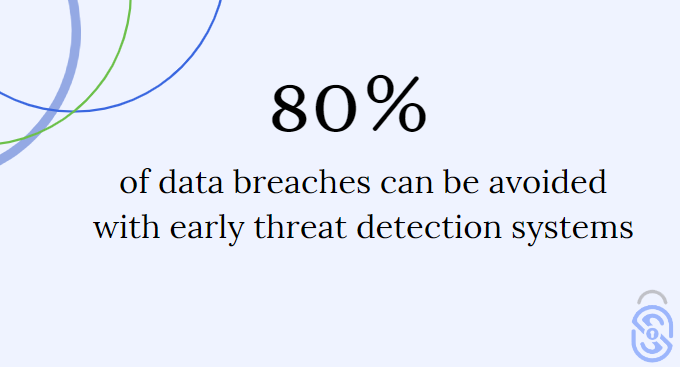With hybrid and fully-remote working environments now the new standard, cyber security has never been more important. The inherent danger of working away from the relative safety of the office are clear, whether it’s through connecting to unsecured public networks or relying on the internet to communicate with colleagues. Staggeringly, a recent study found that 60% of corporate data is now stored in the cloud, as opposed to locally — a 200% increase since 2015.
Needless to say, staying ahead in the realm of cyber security demands innovative approaches, which brings us to the topic of this article — web scraping. While typically associated with data extraction and analysis, web scraping can play a pivotal role in fortifying your cyber defenses and heightening your threat intelligence capabilities. Keen to discover how? Read on.
Understanding Web Scraping
Before we delve into the ways web scraping can bolster your cyber security, let’s get a handle on what web scraping actually entails. In simple terms, web scraping is the automated process of extracting data from a website. It involves using specialized tools or scripts to gather data from web pages and then converting it into a structured format for further analysis.
Web scraping can be likened to a digital detective: it scours websites, collects valuable clues (data), and compiles them for your perusal. This technique is widely used for various purposes, including data research, market analysis, and, as we’re about to explore, enhancing cyber security.
Early Threat Detection
Heading into the first stride of web scraping’s cyber security prowess, let’s discuss early threat detection. In the virtual realm, cybercriminals constantly concoct new techniques to exploit vulnerabilities, infiltrate systems, and pilfer data. Web scraping equips you with the ability to monitor online platforms, forums, and even the dark web for any signs of suspicious activity that might indicate an impending cyberattack.

By using web scraping tools, you can automatically scan sources known for hosting discussions related to hacking, malware distribution, or any other nefarious activities. This proactive approach enables you to identify potential threats before they escalate, allowing your cyber security team to take swift action to prevent any breach.
Vulnerability Identification
Web scraping can serve as a potent ally in identifying vulnerabilities lurking within your current working setup. Cybercriminals are perpetually on the hunt for weaknesses to exploit. By scraping information from publicly available sources such as security bulletins, forums, and vendor announcements, you can compile a comprehensive repository of known vulnerabilities and patches.
This repository not only aids your internal security teams in understanding potential weak points, but also enables them to prioritize patches and updates effectively. This strategy significantly reduces the window of opportunity for attackers to exploit known vulnerabilities, fortifying your cyber defenses.
Brand Monitoring
Maintaining the integrity of your brand image is paramount in today’s digital age. Of course, safeguarding your brand isn’t just about protecting your intellectual property; it’s about fortifying your image and reputation. The landscape of brand infringement encompasses various intellectual property violations, including:
- Counterfeiting: Counterfeiters produce and distribute products of other brands without consent, often using the brand’s reputation to their advantage. However, their products are typically of lower quality due to subpar components.
- Copyright Infringement: This involves the unauthorized distribution of copyrighted content, such as pirated music or movies, often shared on websites without proper licensing.
- Social Media Impersonation: Infringers create fake social media accounts using a brand’s name and logo to sell counterfeit goods or spread malware.
- Patent Theft: Offenders produce and sell patented products without the patent holder’s authorization.
- Trademark Infringement: Offenders can file for trademark registration in countries where a brand isn’t yet registered, exploiting online markets.
- Design Theft: This occurs when an offender uses a patented design feature without permission, such as a unique text logo.
So, how can web scraping help? Well, incorporating web scraping into your cyber security strategy presents an array of advantages, including:
- Tailored Analysis: Configure your scraper to target specific websites and refine data extraction using keywords, location, verified reviews, and ratings. This precision ensures you capture relevant information.
- Structured Data: Personalize how your scraper imports and stores data, resulting in well-organized and readable data sets that are readily accessible for analysis.
- Monitoring Negativity: Your web scraper can actively monitor negative reviews and mentions. Rather than removing such content, engage with it constructively, using it to address your brand’s weaknesses. (Remember, overly positive reviews can appear suspicious to online shoppers.)
- Brand Enhancement: Handling negative feedback adeptly can enhance your brand’s reputation. And what’s more, responding thoughtfully to criticism showcases your commitment to improvement and can positively influence customer perception.
In a world where cyber threats are no longer isolated incidents but ongoing battles, web scraping arms you with the insight and knowledge to stay one step ahead. So, whether you’re a business owner, a security professional, or simply someone concerned about online safety, embracing web scraping as part of your cyber security arsenal might just be the key to safeguarding the digital realm. After all, in this high-stakes game of cat and mouse, the power lies in knowledge, vigilance, and innovative strategies.
